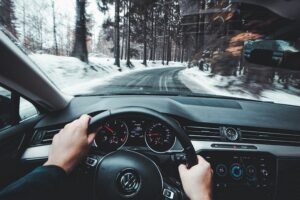8 Situations Requiring Umbrella Insurance: Protecting Your Assets
 Having an umbrella insurance policy can provide valuable protection in various scenarios that exceed the limits of your standard coverage. Here, we highlight eight examples where an umbrella policy proves useful:
Having an umbrella insurance policy can provide valuable protection in various scenarios that exceed the limits of your standard coverage. Here, we highlight eight examples where an umbrella policy proves useful:
Babysitting Mishap:
Imagine your teenage daughter is babysitting the neighbor’s children. She briefly leaves the house to run an errand, and unfortunately, one of the kids gets seriously injured and requires expensive surgery. The parents of the child sue you for the medical bills, which exceed $300,000.
Defamatory Social Media Posts:
Your son expresses his discontent with his gym teacher on social media, making derogatory comments that result in a defamation lawsuit. The court awards the teacher $500,000 in damages.
Reckless Driving:
Your 17-year-old child takes friends for a joyride in your car, losing control and causing severe injuries to all occupants. Your umbrella policy helps cover the substantial medical expenses resulting from the accident.
Alcohol-Related Liability:
Hosting a 4th of July celebration, you provide alcohol to your guests. One friend, who consumes excessively, causes a fatal car accident. The victim’s family sues you for serving alcohol irresponsibly, and you are found liable. The consequences include significant legal expenses and potential damages.
Rental Property Accident:
A rotting deck on your rental property collapses, causing a tenant to suffer a severe leg injury requiring extensive surgery. A jury awards the tenant $750,000 in damages.
Negligence with Rental Equipment:
Renting a bouncy house for a wedding held on your property, you fail to secure it properly, leading to the house blowing away with children inside. Although the children are unharmed, the families sue you for negligence, resulting in a $100,000 award for each family due to mental and post-traumatic stress.
Dog Attack:
Your dog escapes and attacks a neighbor’s show dog, causing permanent scars and a limp, rendering it unable to participate in shows. The dog owner sues you for loss of income, resulting in a jury awarding $450,000.
Social Host Liability:
As the “cool parent,” you agree to provide alcohol to your kids and their friends as long as they stay at your house. Unfortunately, one of the friends leaves and is involved in a fatal accident while intoxicated. The parents of the deceased child sue you for providing alcohol to minors, leading to a jury awarding $2 million in damages.
These situations highlight the importance of umbrella insurance coverage when your existing liability limits on home or auto policies are exceeded. The good news is that umbrella policies are relatively affordable. To determine the best options for your needs, contact our office and request a personalized umbrella insurance quote today.
Ensure you have the necessary protection in place by considering an umbrella insurance policy. These examples illustrate the potential risks and the need for additional coverage. Reach out to us to explore our competitive rates for umbrella insurance and secure your financial well-being.



 A fireplace is often considered one of the most enchanting features of a home, capable of creating a cozy and inviting atmosphere on cold evenings. However, it is essential to prioritize the proper maintenance of your fireplace to ensure the safety of your household and visitors.
A fireplace is often considered one of the most enchanting features of a home, capable of creating a cozy and inviting atmosphere on cold evenings. However, it is essential to prioritize the proper maintenance of your fireplace to ensure the safety of your household and visitors.
 Driving hazards are a daily occurrence, and they can happen at any time of the year, regardless of the state you’re in. It’s crucial to know how to handle these hazards if they arise while you’re on the road.
Driving hazards are a daily occurrence, and they can happen at any time of the year, regardless of the state you’re in. It’s crucial to know how to handle these hazards if they arise while you’re on the road.
 Space heaters offer a convenient and effective way to heat various areas such as garages, bedrooms, and workspaces like offices or shops. However, it is crucial not to overlook the potential dangers associated with these devices, particularly the risk of starting fires. Shockingly, the U.S. Consumer Product Safety Commission reveals that over 25,000 residential fires are caused annually by portable space heaters. Even more alarming, an estimated 300 individuals lose their lives each year due to fires caused by improper usage of space heaters. Additionally, thousands of people suffer from burn injuries that require hospital treatment, all stemming from the mishandling or improper use of these heating devices.
Space heaters offer a convenient and effective way to heat various areas such as garages, bedrooms, and workspaces like offices or shops. However, it is crucial not to overlook the potential dangers associated with these devices, particularly the risk of starting fires. Shockingly, the U.S. Consumer Product Safety Commission reveals that over 25,000 residential fires are caused annually by portable space heaters. Even more alarming, an estimated 300 individuals lose their lives each year due to fires caused by improper usage of space heaters. Additionally, thousands of people suffer from burn injuries that require hospital treatment, all stemming from the mishandling or improper use of these heating devices.
 The National Highway Traffic Safety Administration (NHTSA) states that auto accidents are the leading cause of death for teenagers aged 15-19 in the United States. To combat these statistics, parents should have open conversations with their children about the risks associated with driving and emphasize the “5 to Drive” rules.
The National Highway Traffic Safety Administration (NHTSA) states that auto accidents are the leading cause of death for teenagers aged 15-19 in the United States. To combat these statistics, parents should have open conversations with their children about the risks associated with driving and emphasize the “5 to Drive” rules.